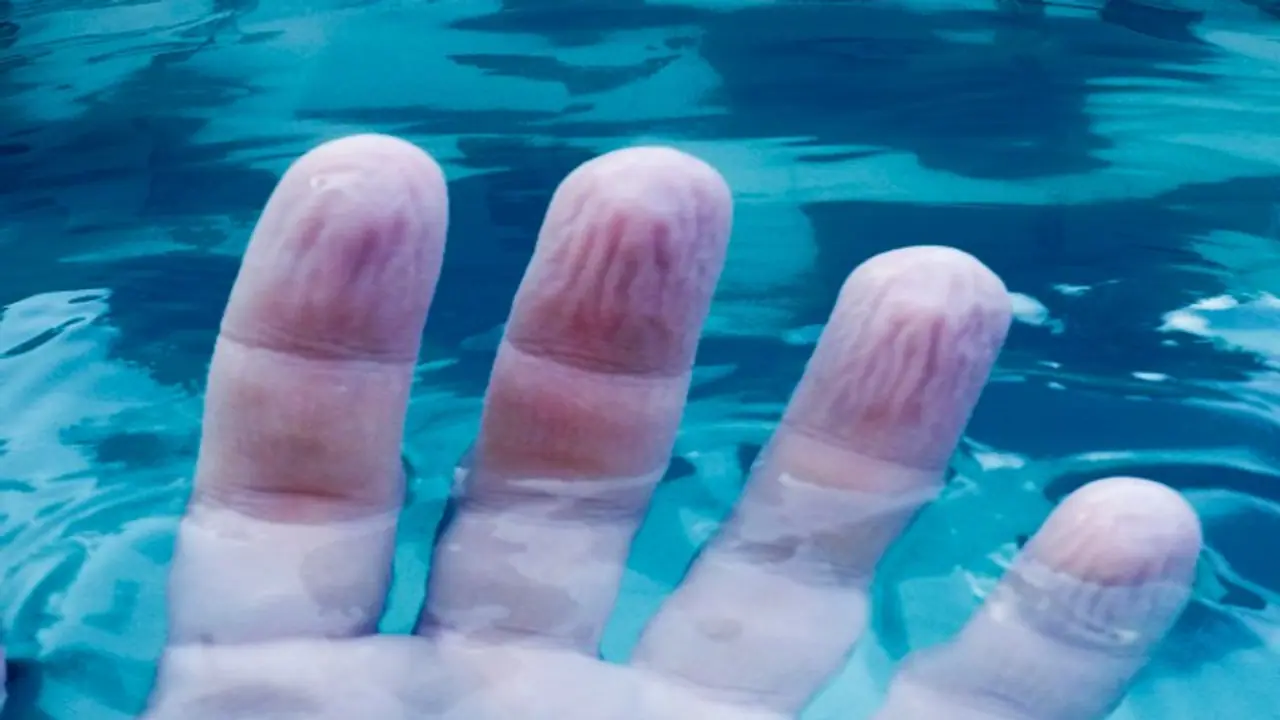Scientists have confirmed that wrinkled fingers in water are caused by nerve-controlled blood vessel tightening, not skin swelling. The wrinkle patterns are consistent and may even help grip better in wet conditions.
We’ve all seen our fingers go wrinkly after a long bath or swim. It’s something we usually don’t think much about — until now. Scientists have finally explained why this happens, and it’s not just about water soaking into your skin.

A new study published in The Journal of the Mechanical Behavior of Biomedical Materials has revealed that the wrinkling of fingers and toes in water is caused by our nerves, not by the skin absorbing water.
Not swelling, but nerve signals
Many people believe that when we stay in water too long, our skin soaks it up, swells, and wrinkles. But scientists discovered back in the 1930s that people with nerve damage in their fingers don’t get wrinkles at all. That means wrinkling must be an active process controlled by the body — not just water absorption.
Now, researchers at Binghamton University in New York, led by Dr. Guy German, have shown exactly how it works.
When your hands and feet are in water for several minutes, sweat pores open and water enters the skin. This causes the salt balance in your skin to drop. Your nerves sense this change and send a message to your brain.
In response, the autonomic nervous system — the part of your body that controls things like heartbeat and breathing — tells your blood vessels to tighten. This reduces the skin’s volume but not its surface area, causing the skin to pucker and wrinkle, like a grape drying into a raisin.
The same wrinkles every time
In the new study, German’s team asked three people to soak their fingers in water for 30 minutes. The researchers carefully drew the pattern of wrinkles on each finger.
When the volunteers repeated the soak 24 hours later, their wrinkle patterns appeared in nearly the exact same spots. This shows that our blood vessels create consistent wrinkle patterns, since the vessels don’t move around much.
Wrinkles might help grip
Dr. German also said that these wrinkles aren’t just a side effect — they may actually be useful.
Other studies have shown that wrinkled fingers give us better grip when handling wet objects. The wrinkles may act like tire treads, helping water drain away and giving more contact between the skin and the surface.
That means your wrinkled fingers might help you walk more safely in water or hold things better while swimming.
What if wrinkles don’t appear?
If your fingers or toes don’t wrinkle in water, it could be a sign of nerve damage, especially in the hands or feet. Doctors sometimes use this as a simple test of nerve health.
So next time you see your wrinkly fingers in the bath, remember — it’s not just water. It’s your amazing body working quietly in the background, helping you grip better and stay safe.


